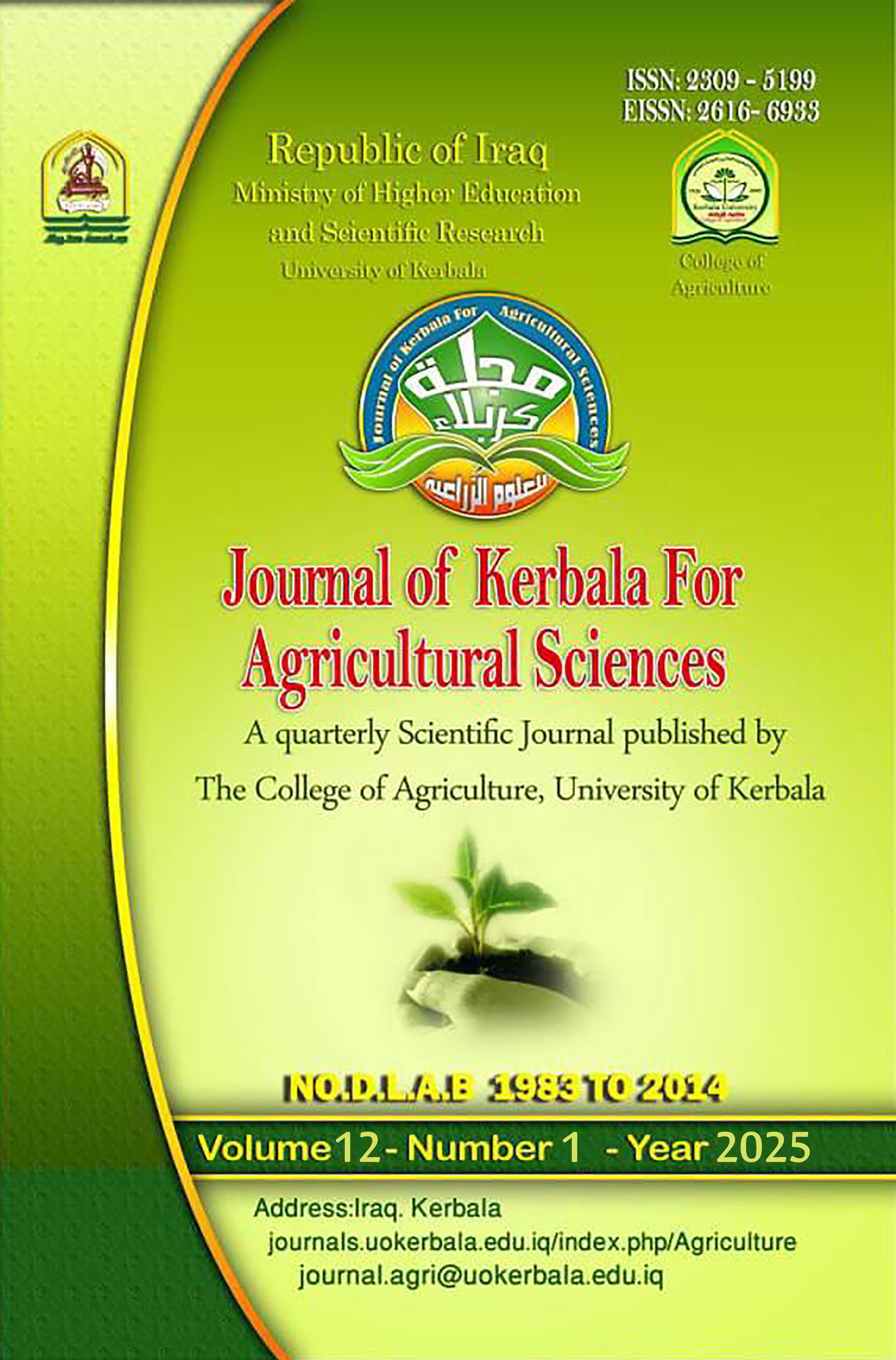The Efficacy of vermicompost, effective microorganisms (EM1), and humic acid in managing cucumber root rot caused by Rhizoctonia solani in Iraq
DOI:
https://doi.org/10.59658/jkas.v12i1.3250Keywords:
Cucumis sativus L., Root rot diseases, Rhizoctonia solani, Effective Microorganisms (EM1), VermicompostAbstract
This research aims to manage cucumber root rot disease caused by the fungus Rhizoctonia solani using Vermicompost, the microbial product Effective Microorganisms (EM1), and humic acid under field conditions. The field survey results confirmed the spread of cucumber root rot disease in the surveyed areas, with infection rates ranging between 48.0% and 46.23% while disease severity between 28% and 38%. Several types of fungi associated with root rot disease were isolated and identified, with Rhizoctonia solani being the most frequently occurring pathogenic fungi, followed by Fusarium spp. and Macrophomina phaseolina. The results also showed that all tested isolates of Rhizoctonia solani were pathogenic and caused a significant reduction in the germination rate of cucumber seeds. Additionally, the results demonstrated the ability of the microbial product EM1 to inhibit the growth of Rhizoctonia solani on P.D.A with the highest inhibitory effect was observed at concentrations of 5%, 10%, and 15%, where the percentage of inhibition reached 100%. The field experiment results showed that all tested treatments reduced disease severity to varying degrees. The treatment combining all control factors (EM1 + Vermicompost + Humic Acid) recorded the highest inhibition rate of disease severity of 6.66%, compared to 77.77% in the pathogen-only treatment. This combination effectively controlled the pathogen and significantly limited the spread of the infection. The combination of the bio-product and Vermicompost ranked second, reducing disease severity to 13.33%, followed by the combinations of the Bio-preparation with humic acid and Vermicompost with humic acid, with disease severities of 22.22% and 26.66%, respectively.
Downloads
Published
How to Cite
Issue
Section
License
Copyright (c) 2025 Copyright (c) 2024 is the Author's article. Published by the Journal of Kerbala for Agricultural Sciences under a CC BY 4.0 license

This work is licensed under a Creative Commons Attribution 4.0 International License.
Licensing Terms
All articles are published under a Creative Commons License and will be directed to the Creative Commons Attribution 4.0 International License (CC BY 4.0) That permits use, distribution, and reproduction in any medium, provided the original work is properly cited. This license also allows the work to be used for commercial purposes.
Use by both non-commercial and commercial users
This content is licensed under a Creative Commons Attribution 4.0 International (CC BY 4.0) license, permitting use by both non-commercial and commercial users. Individual users may access, download, copy, display, and redistribute the articles to colleagues, as well as adapt, translate, and text- and data-mine the content, subject to the following conditions:
- The author's moral rights, including the right of attribution and the right to protect their work from derogatory treatment, are respected.
- Where content in the article is identified as belonging to a third party, users must ensure that any reuse complies with the copyright policies of the owner of that content.
- If the article content is reused for research or educational purposes, users should maintain a link to the appropriate bibliographic citation, including the DOI and a link to the published version on the journal's website.






